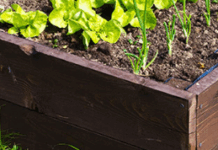Most calls on how to control bagworms come in late July to early August when damage appears. Bagworms are difficult to control when they are that large. They are much easier to kill while small. Bagworms overwinter as eggs inside the dead female’s bag. Young larvae normally hatch and emerge during mid to late May in Kansas. Now would be a good time to use control measures if you haven’t already sprayed. However, make sure the bagworms are present by looking for a miniature version of the mature bagworm. Also, check to be sure the bagworms are alive before spraying. Predators and parasites can sometimes naturally control this pest.
Insecticides commonly used for controlling bagworms include acephate (Orthene), permethrin (numerous trade names), cyfluthrin (Bayer Vegetable and Garden Insect spray), bifenthrin (Bug Blaster II, Bug-B-Gon Max Lawn and Garden Insect Killer), lambda-cyhalothrin (Spectracide Triazicide, Bonide Caterpillar Killer) and spinosad (Conserve; Borer, Bagworm, Leafminer and Tent Caterpillar Spray; and Captain Jack’s Dead Bug Brew). Spinosad is an organic control that is very effective on this pest. Thorough spray coverage of foliage is essential for good control with any of these products. (Ward Upham)




